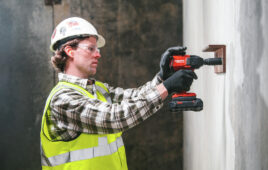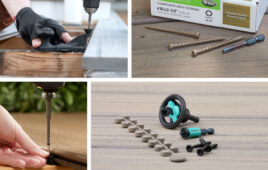Article provided by Rotor Clip

Spiral retaining rings
Retaining rings — also known as snap rings or circlips — are metal fasteners installed into a groove on a shaft, or in a housing or bore to retain an assembly. The devices keep parts in place using a compact, lightweight design that requires fewer machining operations than other fastening techniques.
Engineers specify retaining rings based on an application’s:
• Installation and removal requirements
• Rotational speed
• Conditions and operating environment
• Expected force load(s) on the ring
• Cost
Retaining rings can range in size from 1mm to 1m in diameter. Different combinations of size, shape, style, and material result in designs that work in a variety of industries and applications. A standard automobile, for example, can have more than 50 retaining rings in systems including the powertrain, steering, and passenger safety.
Retaining rings are also used in several other applications, such as fitness equipment, wind turbines, bearing retention, bicycles, doorknobs, gas pumps, office equipment, and many others.
Design considerations
Retaining rings can be classified into three main categories based on design. Tapered and constant section retaining rings describe a nearly complete circle with a gap between two free ends.
Tapered-section rings decrease in width from the top of the ring to the free ends. Installed, they make continuous contact within their installation groove. Some tapered-section rings are designed for axial installation feature lugs that make them easier to expand and place.
Constant section rings, in contrast, have the same width throughout their circumference. A stiffer cross-section results in contact at three points within the installation groove. These simple, easy-to-produce rings typically do not have lugs.

Constant section retaining rings or snap rings.
Spiral rings are made from flat wire that’s coiled two or three times around the circumference. They make a 360-degree contact within their groove and have a constant width around their circumference. Spiral rings are rarely designed with installation lugs but, instead, have notched ends that aid in their removal.
Meeting demands
When choosing a retaining ring style, you’ll first want to consider the demands of the application. Some styles of tapered section rings offer a significant radial spring force that can handle high RPM applications and high loads. However, others are far less suitable for high speeds or forces, so be sure to check each style’s ratings.
Spiral rings tend to work well with high loads and, particularly, in applications where resilience to dynamic loading is necessary. Generally, spiral rings have lower RPM capabilities than tapered section rings. However, some designs like spiral rings with patented locking features, keep the product tightly in place. These devices are balanced and available in materials and styles that include light or heavy-duty, depending on the force load required.
Although constant-section rings are typically used in applications with lower load and speed requirements, several styles are available that can bear significant loads at a reasonable cost.
Choosing well
When choosing the ideal component, consider the preferred installation method and the frequency with which you’ll be installing and removing the rings. For instance, the lugs on axially installed tapered-section retaining rings make them easy to install and uninstall with commonly available tools, such as retaining ring pliers. Keep in mind, designers must ensure they leave clearance for the lugs and room for the pliers to fit within the design.

Tapered section retaining rings or circlips.
Constant-section rings are manufactured to ensure a controlled edge condition on the mating surface for less wear from sharp edges. The absence of lugs gives this style a low clearance but requires a tapered mandrel or cone for installation.
Spiral rings are also free of sharp edges. They are the most difficult to install, often via a tapered mandrel or cone — but they also offer the lowest clearance of the three style types. Spiral rings are ideal for tamper-proofing. For easier removal, simply choose an end type that renders the spiral rings easy to uninstall with a flat-head screwdriver.
The cost and availability of each style of retaining ring are also important considerations. The greater the load and speed capabilities of a tapered section retaining ring typically means a higher cost. Constant section rings might offer a less costly choice of meeting the performance requirements of an application.
Since spiral rings are coiled from flat wire, their manufacture requires less tooling than stamped parts. This means it’s faster and more cost-effective to create spiral rings with custom sizes and shapes compared to other retaining ring styles.
The application requirements, installation practices, and budget are all factors to consider when choosing a retaining ring style.





Tell Us What You Think!